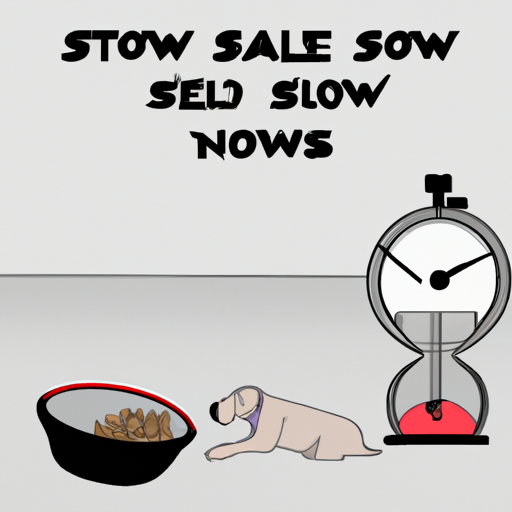As a loving caregiver, you know that your fur babies deserve all the best care in the world. But sometimes, your canine companion’s rapid eating habits might leave you worried and concerned. You are not alone. In this guide, we will explore effective methods to slow down your dog’s eating speed.
1. Understanding Your Dog’s Eating Habits
Understanding the reasons behind your dog’s rapid eating is the first step towards solving the problem.
- Breed Specific: Some breeds are just naturally fast eaters. Labradors, for instance, are known for their voracious appetites.
- Competition: If you have more than one dog, they might be eating quickly due to a sense of competition.
- Hunger: If your dog is not getting enough food or is fed at irregular times, they might eat their meals too quickly.
2. Invest in Specialized Dog Bowls
Specialized dog bowls can be a great solution to slow down your dog’s eating speed.
- Slow-feed bowls: These bowls are designed with ridges and mazes to make it harder for your dog to get the food.
- Puzzle feeders: These require your dog to solve a puzzle to get food, slowing down their eating speed.
| Type of Bowl | Pros | Cons |
|---|---|---|
| Slow-feed bowls | Easy to use, affordable | May not work for flat-faced breeds |
| Puzzle feeders | Engaging, slows eating | More expensive, require training |
3. Change Your Feeding Methods
Altering how you feed your dog can also make a big difference.
- Portion Control: Instead of one big meal, feed your dog smaller portions throughout the day.
- Hand Feeding: This can help control the speed at which your dog eats.
- Scatter Feeding: Scatter your dog’s food across a wide area. This will force them to spend more time looking for their food.
4. Training and Behavior Modification
Training your dog to eat slower can be a bit challenging, but it’s worth it.
- Command Training: Teach your dog commands like “slow” or “wait”. Reward them when they obey.
- Positive Reinforcement: Praise your dog when they eat slowly. They will soon associate slow eating with positive attention.
5. Consult a Veterinarian
If your dog’s rapid eating continues despite your best efforts, it’s time to seek professional help. Your vet can rule out any underlying health issues and provide more personalized advice.
FAQs
Q: Can fast eating cause health issues in dogs?
A: Yes, fast eating can lead to choking, gastric dilatation-volvulus (GDV), and obesity.
Q: How long should it take for my dog to finish a meal?
A: Ideally, it should take them 10-20 minutes to finish their meal.
Q: Can I use a slow-feed bowl for a puppy?
A: Yes, slow-feed bowls are suitable for dogs of all ages.
Q: What should I do if my dog refuses to eat from a slow-feed bowl?
A: Be patient and give them some time to adjust. If they still refuse, try another method or consult a vet.
Remember, every dog is unique. What works for one dog might not work for another. The key is to be patient and consistent in your efforts to slow down your dog’s eating speed.



